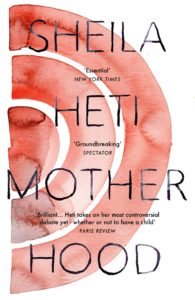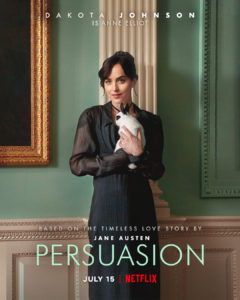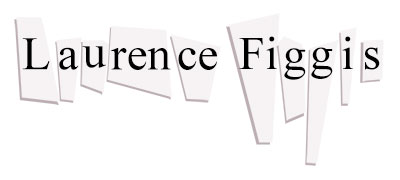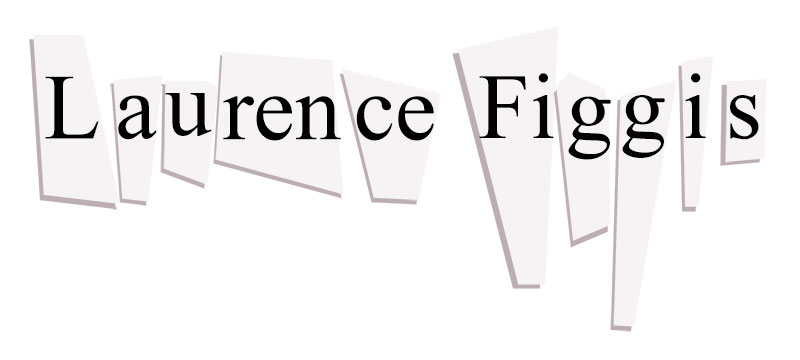“Near and Deep as the Thunder Crashed”: what the lyric does to the biographical in fiction
In a 2008 essay, ‘Why Lyric,’ Jonathan Culler goes as far as to argue that the lyric form is opposed to narrative and should not be confused with it. After lamenting what he regards as a prevailing tendency to treat poems as dramatic monologues, aligned with the novel, Culler goes on to state:
“…it is deadly for poetry to try to compete with narrative—by promoting lyrics as representations of the experience of subjects—on terrain where narrative has obvious advantages” (Culler, 2008: 202).
Culler does not openly state the fact, but we can only assume; it must be equally “deadly” for novels to try to compete with poems. What role, then, does the lyric play in fiction – especially biographical fiction, a genre that would be seem to be directly involved with the lived experience of “subjects”?
The word lyric has its roots in classical antiquity: originally denoting a verse sung to the lyre. (Of course, we still speak of the lyrics of songs). As Culler observes, drawing on Charles Baudelaire’s description of the form as “hyperbole and apostrophe,”— according to Baudelaire the “most agreeable” language forms and also the “most necessary”—lyric is “characteristically extravagant, performing speech acts not recorded in everyday speech,” (Culler, 2008: 205). It is “the foregrounding of language, in its material dimensions, and thus both embodies and attracts interest in language and languages—in the forms, shapes, and rhythms of discourse”; it is linked both to “the bodily experience of temporality, on the one hand, and to the formative dwelling in a particular language, on the other” (Culler, 2008: 205).

Sheila Heti, Motherhood, 2018
Surely such terms are not applicable to the biographic form of the novel, especially to what has recently been termed “autofiction”, a candid genre of self-referential storytelling associated with such writers as Sheila Heti, Ben Lerner, Teju Cole, Jenny Offill, Tao Lin, and Karl Ove Knausgaard. Autofiction, a fairly nascent genre, has been defined broadly as a novel in which the author recounts their lived experiences and internal monologues without the apparent cloaking device of an invented fictional persona. Like all literary definitions the term is slippery and rather unsatisfying (it may even have been invented for marketing purposes). But, taken at face value, it would seem wholly resistant to the lyric form. As Christian Lorentzen, notes, these books “invite readers to imagine they might be reading something like a diary, where the transit from real life to the page has been more or less direct” (Lorentzen, 2018). Surely this impression would not likely be achieved through a lyric form invested in “extravagant speech acts” absent from every-day speech, or “the foregrounding of language, in its material dimensions”.
The author Joyce Carol Oates recently trounced the fashionable efforts of younger writers in a now infamous tweet:
“Strange to have come of age reading great novels of ambition, substance, and imagination (Dostoyevsky, Woolf, Joyce, Faulkner) and now find yourself praised and acclaimed for wan little husks of ‘auto fiction’ with space between paragraphs to make the book seem longer.” (qtd. Waldman, 2022).
In a subsequent interview with the journalist Katy Waldman, Oates qualified but didn’t quite retract this criticism. “I encourage my students to write out of their strength,” she said, “so if they’re really strong in writing about themselves, and confessional memoirist work, then that’s what they should do”. But she admitted a preference for “writing about subjects of great tragic and political significance” over what she called “these very autobiographical minimalist works of fiction” (qtd. Waldman, 2022).
Whatever we make of Oates’ diatribe; and it should be acknowledged that autofiction, like all literary genres, is characterised by a diversity of approaches and a range of levels of mediocrity or excellence (critical judgement resting, after-all, in the eye of the beholder—one person’s sublime is another person’s ridiculous, and so on); but whatever we make of her dry little husks, it should be recognised that her essential objections are not new objections – they have historical precedent.
Echoing, for example, Charlotte Brontë’s less than positive view of Jane Austen’s work, recorded in her letter to the writer and critic G.H. Lewes in 1848:
“Why do you like Miss Austen so very much? I am puzzled on that point… I had not seen Pride and Prejudice till I read that sentence of yours, and then I got the book. And what did I find? An accurate daguerreotyped portrait of a commonplace face; a carefully fenced, highly cultivated garden, with neat borders and delicate flowers; but no glance of a bright, vivid physiognomy, no open country, no fresh air, no blue hill, no bonny beck. I should hardly like to live with her ladies and gentlemen, in their elegant but confined houses.” (qtd. Tanner 1972: 7).
Though not quite as visceral as the “wan little husks” that Oates deplores, Brontë’s “confined houses” function in much the same way—as negative symbols for a perceived narrowness of vision, a perceived lack of spiritual and narrative ambition. There are many readers who might concur with Brontë’s judgement to this day. Austen herself was quite candid in her acceptance of her own limits. Her famous parabolic statement reads as a pre-emptive answer to Charlotte:
“What should I do with your strong, manly, spirited sketches, full of variety and glow? How could I possibly join them on to the little bit (two inches wide) of ivory on which I work with so fine a brush, as produces little effect after much labour?” (Austen, 1952: 468-9)
Of course, those who love Austen are precisely compelled by this quality of exquisite restraint— the product of so much labour. We might even make a claim that Austen was a writer engaged with foregrounding “language, in its material dimensions” and thereby connected in some respect to the lyric form—that her work is characterised by a “formative dwelling in a [very] particular language”.
Still, you’re more likely to hear Brontë’s work described as lyric, because it typifies the performative excess of the romantic tradition; engaged with expressing emotions through figurative language derived from natural imagery, and so forth.
I came into close contact with these lyric qualities when reading aloud from Jane Eyre, Brontë’s most famous novel (and for all intents and purposes an autobiographical fiction), at my brother’s wedding four years ago. My brother who is (like me) from the north of England was getting married to an Italian, in Italy (Liguria), at the beginning of June—and it seemed appropriate to recall a passage in Jane Eyre in which a northern English day in June is compared to an Italian sky. I found the passage at the beginning of chapter 23. It reads as follows:
“A splendid midsummer shone over England. Skies so pure, suns so radiant… as if a band of Italian days had come from the south, like a flock of glorious passenger-birds and lighted to rest them on the cliffs of Albion.” (Brontë, 2008: 286)
Those metaphorical birds appear shortly before Jane and Mr Rochester meet in the garden and discuss their feelings. I wanted to get the gist of their entire confessional (which struck me then as very apposite). I only had five minutes to speak, and so I was forced to redact the text somewhat, removing all the exposition and conflating certain paragraphs to make it more manageable. I learned the passage by heart; first because I wanted to avoid the risk of stumbling my words; second because I wanted to armour myself against its very poignant subtext. In fact, the reverse was true; the more familiar I became with the language—the more immersed in its structure—the less stoical I became. I had particular trouble with a sentence involving a string—this is Mr Rochester speaking to Jane:
“[…] I sometimes have a queer feeling with regard to you, especially when you are near me as now: it is as if I had a string, somewhere under my left ribs, tightly and inextricably knotted to a similar string situated in a corresponding quarter of your little frame. And if that boisterous Channel, and two hundred miles or so of land come broad between us, I’m afraid that chord […] will be snapped, and then I’ve a nervous notion I should take to bleeding inwardly.” (Brontë, 2008: 291).
That string— I couldn’t get past it without my voice catching in my throat. When, on the day of the wedding, I got to the remote location for the ceremony, I found I had forgotten the piece of paper on which the text was printed. “I can remember it,” I assured my nervous brother; and, in fact, I was much less afraid of forgetting the words than I was of sobbing in public. Reader, I sobbed—and so did my brother—but at least I remembered the text—every single word—and while I attribute that to some labour on my part, I also thank Brontë’s structure, her “foregrounding of language in its material dimensions”—the lyric quality of the text.
Listen to these phrases, at the end of the chapter, describing a storm:
“The rain rushed down […] But joy soon effaced every other feeling; and loud as the wind blew, near and deep as the thunder crashed, fierce and frequent as the lightening gleamed, cataract-like as the rain fell for a storm of two hours’ duration, I experienced no fear […]” (Brontë, 2008: 296)
…near and deep as the thunder crashed, fierce and frequent as the lightening gleamed… These phrases read like a song. They have definite meter. You can imagine them divided into lines in a poem. Reading them aloud at my brother’s wedding felt like chanting or beating a drum—very satisfying.
As Culler states: “lyric is memorable language—made memorable by its rhythmical shaping and phonological patterning […] The power to embed bits of language in your mind, to invade and occupy it, is a salient feature of lyrics: poems […] ask to be learned by heart […] The force of poetry is linked to its ability to get itself remembered, like those bits of song that stick in your mind, you don’t know why.” (Culler, 2008: 205)
But song lyrics and poems get themselves remembered (sometimes unwillingly) not just because they are characterised by rhythmical shape and pattern— but because they are economical in structure. In the essay ‘Making Lyric’, 2019, Zachery Tavllin recalls an image from Wimsatt and Beardsley’s essay on the ‘Intentional Fallacy’ from 1946; according to them: “Poetry succeeds because all or most of what is said or implied is relevant; what is irrelevant has been excluded, like lumps from pudding and ‘bugs’ from machinery (Wimsatt, 1946: 469)”. As Tavllin writes, expanding this metaphor: “making a poem is like making a sculpture, except whereas the sculptor removes ‘irrelevant’ parts of the marble block the poet removes the ‘irrelevant’ pieces of language that initially attach themselves to the words, phrases and tropes collected or acquired by the poet.” (Tavllin, 2019: 64-5)
In that sense, we can understand how the term lyric might be just as—if not more—applicable to Jane Austen’s “confined” style as to Charlotte Brontë’s more declamatory romantic tone. In her false-modesty, Austen compared her own labour to the delicate weight of a brush on a small piece of ivory; we can imagine how such a deft approach is guided from the outset by a strong intuitive sense of what constitutes “irrelevant” material. And we can appreciate how, in contemporary literature, the lyric form might also emerge in what Oates calls “very minimalist” works of autobiographical fiction. What better example could we find of a literary approach that excludes “irrelevance” than a genre that has narrowed its focus to the author’s lived experience and the most “direct” uncluttered means for conveying that experience?
The typical autofiction is a narrative devoid of plot or even “event” in the literary sense; certainly a genre devoid of the pastiche and hyperreality characteristic of the postmodern novel, as the critic Jonathon Sturgeon has argued (see Sturgeon, 2014). It is, above all, a narrative in which artifice is present but deftly concealed. Referring to the diaristic connotations of autofiction, Lorentzen calls this impression of veracity “an illusion”. “Heti’s and Lerner’s books don’t lack artifice”, he writes, “— they are novels, however their readers receive them — but the artifice is in service of creating the sensation that there’s no artifice, which is the whole point” (Lorentzen, 2018). Again, we are in Jane-Austen-like territory here, however far removed her polite drawing rooms might be from Heti’s Motherhood or Chris Krauss’s I Love Dick.
According to Lorentzen, what distinguishes autofiction from other contemporary genres of first-person biographical narrative is “an emphasis on the narrator’s or protagonist’s…status as a writer or artist” (this being referred to directly or implicitly within the text); also “that the book’s creation is inscribed in the book itself” (Lorentzen, 2018). This resonates with another aspect of the lyric as defined by Tavllin: that writing poetry is akin to making sculpture —hewing marble—a metaphor which heightens the material dimension of language through its resemblance to scraping, moulding and chiseling. According to this analogy, lyric form articulates itself as a process of (physical) refinement.

Robert Morris, Untitled L-Beams, 1965
To return for a moment to Joyce Carol Oates, her use of the term “minimalist” to describe autofictive works is both pointed and peculiar—recalling the term adopted by artists and critics in the 1960s to denote a form of abstract making in which all narrative, all internal structures, all spiritual allusions are suppressed. But is this really an apt comparison? Isn’t autofiction, by its very nature, characterised by something much more human—more messy and vulnerable—than the sort of sterile modernism exemplified by minimal art? Or is the focus on lived experience (including the writer’s experience of making the text itself) the ultimate reductionist form, the final paring down of literature to its essential ingredients?

The Netflix Persuasion, 2022
Culler writes that: “Narrative structures are translatable, but lyric, in its peculiar structural patterning, figures the givenness, the untranscendability, of a particular language” (Culler, 2008: 205). In other words, fictions can be experienced outside their language; their plots can be summarised and so forth, whereas poems can only be experienced as they were written. If this were true, then how do we explain the ill service done to Brontë novels and Jane Austen novels by various screen adaptations. “Persuasion (2022) is a hate crime!” the novelist Brandon Taylor recently declared. He was referring of course to the Netflix version of the novel (starring Dakota Johnson in the principal role), not the original, which is Taylor’s favourite among Austen’s books. In a review for his substack, Sweater Weather, Taylor identified a number of outrages perpetrated by the film; crucially these are violations of language, character and tone—as opposed to any substantial deviations from the “plot”. They include an “extremely winky” heroine “turning to mug at the camera every five seconds, sometimes to deliver […] exposition”; further incongruous scenes, reminiscent of 1990s rom coms, in which the heroine drinks wine to excess, while looking archly at the viewer or cries in the bath; her knowing reference to a “playlist” in one mawkish scene; the “insipid music cues…all faux-romantic swells…” which Taylor compares to a “recorder recital” (Taylor, 2022). These elements have the combined effect of turning what Taylor regards as “Jane Austen’s final, best novel into a broad, flat social comedy”. We should deplore the resulting travesty, because as Taylor writes, the original has much to impart about loss and regret:
“It was the last book that Austen completed in her lifetime, and she wrote it as she was dying. But it isn’t morbid. It’s funny, wry, and really moving because. Where some Austen novels chronicle the bright, flashing episodes of youth, Persuasion follows a young woman who has to go on living after those episodes have concluded prematurely. What do you do when all the great and good have gone and all you’ve got left is the quiet business of life? There is a melancholy tone hanging over Persuasion. You feel that Austen is saying goodbye…” (Taylor, 2022).
The Netflix Persuasion lacks, as Taylor demonstrates, any sensitivity for this material. There is a lesson to be gleaned from its failure: the integrity of lyric form can be found in novels as much as in poems. Like a poem, the novel succeeds because all or most of what it says or implies is relevant; “what is irrelevant has been excluded, like lumps from pudding and ‘bugs’ from machinery”. In effect the Netflix Persuasion subverts this principal—more out of incompetence, it would seem, than design. The filmmakers have deliberately re-inserted lumps in the batter, put bugs in the elegant machine. The heroine’s winking and mugging, her bathtub weeping and drinking, the insipid music cues, the crude irony of the “wry smirk” that permeates the film; these are all lumps (Taylor, 2018). The loss of the writer’s vision is owing less to her work having been “stripped-back” or simplified, than it having been subject to unnecessary and burdensome additions.
I conclude with a few words from the poet and critic James Longenbach, his essay on ‘Lyric Knowledge’—gesturing at the vital relationship of lyric form to biographical fiction in both its historical and contemporary manifestations:
“The impulse to be lyrical is driven by the need to be no longer constrained by oneself. As poems have testified for centuries, we become lyrical when we suffer, when we love. But like poems themselves, we exist because of constraints—cultural and linguistic ways of organizing experience that allow us to imagine we know who we are. Why, when we’re driven to be lyrical, are we gratified by familiar patterns, formal patterns made by breaking words into syllables, structural patterns made by conjoining words with other words? Why do we imagine we may be liberated by unfamiliar patterns, patterns whose novelty depends on patterns we already know?” (Longenbach, 2016: 529)
This essay was read aloud for the Autumn School Open Masterclass, Biographical Fictioning: Part 2: The Lyric, presented by MLitt Art Writing at the Glasgow School of Art, 31st October – 1st November, 2022.
REFERENCES:
Austen, Jane, To J. Edward Austen, 16 December 1816, Jane Austen’s Letters to Her Sister Cassandra and Others, R.W. Chapman (ed), (London: Oxford University Press, 1952), pp.468-9.
Brontë, Charlotte, Jane Eyre, (London: Penguin, 2008).
Brontë, Charlotte, letter to G.H. Lewes, 1848, qtd. Tanner, Tony, Introduction to Jane Austen, Pride and Prejudice, (Harmondsworth: Penguin Books), 1972: pp7-46.
Culler, Jonathan, ‘Why Lyric?’, PMLA, Jan., 2008, Vol. 123, No.1 (Jan., 2008), pp.201-206.
Longenbach, James, ‘Lyric Knowledge,’ Poetry, February 2016, Vol. 207, No. 5 (February 2016), pp. 529-539.
Lorentzen, Christian, ‘Sheila Heti, Ben Lerner, Tao Lin: How ‘Auto’ Is ‘Autofiction’?’, Vulture, May 11, 2018, https://www.vulture.com/2018/05/how-auto-is-autofiction.html (29.10.2022).
Sturgeon, Jonathon, ‘2014: The Death of the Postmodern Novel and the Rise of Autofiction,’ Flavorwire, Dec 31, 2014, https://www.flavorwire.com/496570/2014-the-death-of-the-postmodern-novel-and-the-rise-of-autofiction (30.10.2022).
Tavllin, Zachery, ‘Lyric Making: On Frostian Technique,’ The Robert Frost Review, Fall 2019, No. 29 (Fall 2019), pp.60-73.
Taylor, Brandon, ‘Persuasion (2022) is a hate crime,’ Sweater Weather, July 9 2022, https://blgtylr.substack.com/p/persuasion-2022-is-a-hate-crime , (30.10.2022).
Waldman, Katy, ‘Joyce Carol Oates Doesn’t Prefer Blondes,’ The New Yorker, September 25, 2022, https://www.newyorker.com/culture/the-new-yorker-interview/joyce-carol-oates-doesnt-prefer-blondes , (28.10.2022).
Wimsatt, W. K., and M. C. Beardsley. “The Intentional Fallacy.” The Sewanee Review, vol. 54, no. 3, 1946, pp. 468–88.

